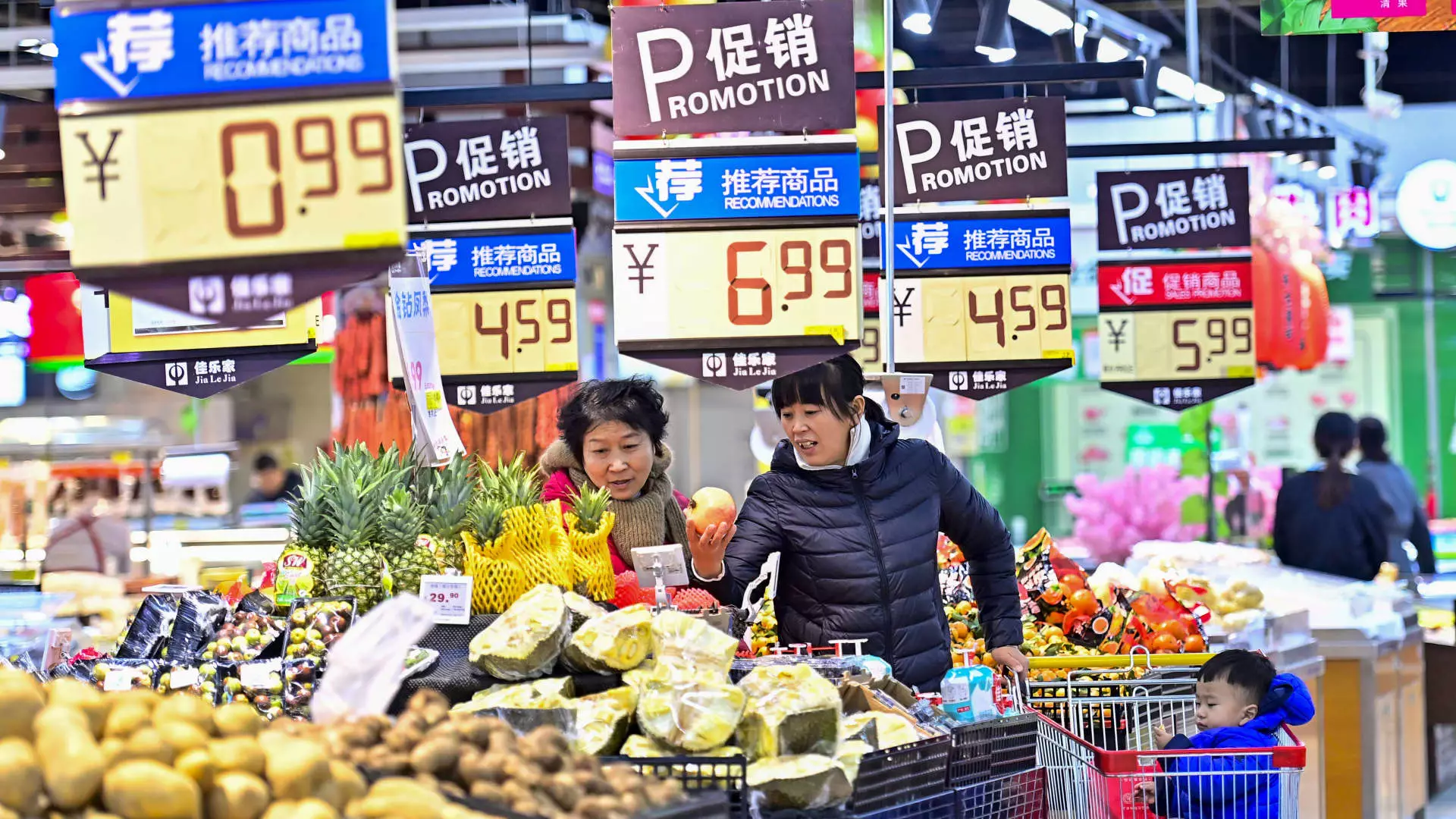As we venture into the complexities of China’s economic landscape, the latest consumer price index (CPI) data highlights significant concerns regarding inflation and potential deflation. December figures, released by the National Bureau of Statistics, revealed that inflation had thinned out to a meager 0.1% year-on-year, a stark contrast to the 0.2% increase observed in November. This shift has prompted analysts to raise alarm bells about persistent deflationary pressure crippling consumer demand—a principal driver of economic vitality.
Examining the data closely, the core CPI, which factors out volatile food and energy prices, showcased a slight uptick of 0.4% year on year, marginally higher than the previous month’s 0.3% increase. However, a month-on-month evaluation reveals stagnation, with the CPI remaining unchanged compared to November’s decline of 0.6%. These figures reinforce the grim reality of declining food prices. Notably, fresh vegetables and fruits saw price drops of 2.4% and 1%, respectively. Pork prices, a considerable component of the CPI, fell by 2.1%, despite showing a 12.5% year-on-year increase. Analysts from ANZ Bank opine that an ongoing downturn in pork prices could further hinder headline CPI in the coming months, which could intensify deflationary fears.
The bleak picture is mirrored in the producer price index (PPI), which has been in decline for 27 consecutive months. In December, the PPI dropped 2.3% compared to the same month last year, slightly outperforming expectations of a 2.4% contraction. The month-on-month figures also reveal a 0.1% decline following a brief resurgence in November—an indicator of waning demand for industrial goods, particularly in the steel sector, as infrastructure and real estate projects faced temporary halts during the off-season.
At the heart of China’s economic malaise lies a troubling demand shortage. Despite various stimulus measures rolled out since last September—including interest rate cuts and support schemes for the stock and property markets—consumer spending has yet to rebound. Beijing’s recent initiatives, such as a consumer trade-in scheme designed to encourage spending through subsidies for equipment upgrades, have been labeled as mere “quick fixes” by analysts like Louise Loo from Oxford Economics. This sentiment underscores a significant concern: measures that fail to stimulate sustainable long-term consumption can lead to future payback effects, jeopardizing potential growth down the line.
The looming specter of deflation is especially pronounced in the lead-up to the Chinese New Year, a period traditionally associated with increased consumer expenditure. However, the current economic climate has instilled a wait-and-see attitude among consumers, who are now inclined to hunt for discounts rather than make impulsive purchases. Shaun Rein, managing director of the China Market Research Group, pointed out the limitations of incentives like the “cash for clunkers” program, arguing that such initiatives fail to address the underlying stagnation in the retail sector.
Despite certain indicators signaling potential recovery—such as a consistent expansion in factory activity over the past three months—caution prevails. The pace of manufacturing growth has decelerated in December, reinforcing the necessity for a strategic overhaul to stimulate more robust economic conditions. According to Carlos Casanova from Union Bancaire Privée, while there are glimpses of improvement, challenges remain formidable due to stagnation in the property sector and ongoing trade tensions with the United States.
The broader global economic context further complicates China’s recovery trajectory. Recent developments indicate that the onshore yuan has plunged to a 16-month low against the U.S. dollar, coinciding with rising Treasury yields. A stronger dollar could create additional headwinds for China’s already fragile economic environment.
The recent data underscores a problematic scenario for China, where inflationary pressures are nearly non-existent, consumer demand is faint, and producer prices continue to languish. The need for effective policy responses is urgent as the country grapples with legacy challenges while attempting to adapt to a rapidly shifting global economy. The road to recovery appears increasingly daunting, and the anticipated measures must engender lasting consumer confidence and stimulate genuine domestic demand to avoid the pitfalls of sustained deflation.

